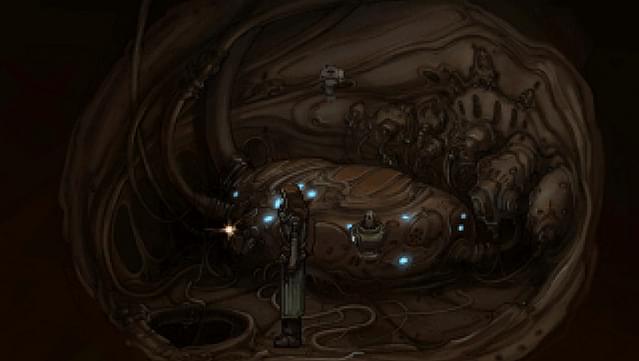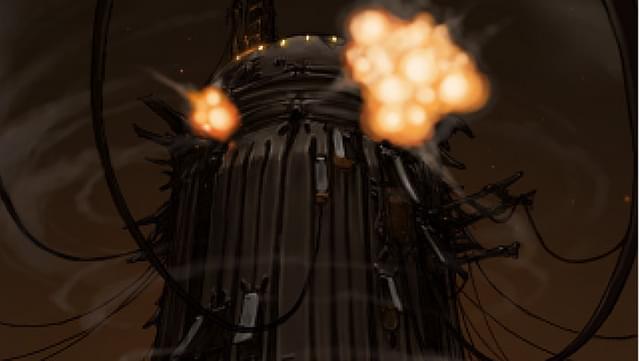
The relationship between Abd-B and abd-A in the female genital disc is opposite to that of the embryonic epidermis, and contravenes the rule that posteriorly expressed Hox genes downregulate more anterior ones.īruce Baker's laboratory made a huge impact on our understanding of Drosophila sex determination mechanisms. By contrast, although Abd-B m is the main or only Abd-B transcript present in the female A8, Abd-B m– clones induced in this primordium do not alter Distal-less or abd-A expression, and transform the A8 segment into the A4. In the female A8, many Abd-B m–r– mutant clones produce similar effects, and also downregulate or eliminate abdominal-Aexpression. In the male A9, some Abd-B m–r– or Abd-B r– clones activate Distal-less and transform part of the genitalia into leg or antenna. Although Abd-B r represses Abd-B min the embryo, in at least part of the male A9 such regulation does not occur. Abd-B m is needed for the development of A8 derivatives such as the external and internal female genitalia, the latter also requiring abdominal-A (abd-A), whereas Abd-B r shapes male genitalia (A9 in males). We show here that the embryonic genital disc, like the larval genital disc, is formed by cells from the eighth (A8), ninth (A9) and tenth (A10) abdominal segments,which most likely express the Abd-B M, Abd-B R and Caudal products,respectively. This gene encodes two different proteins, Abd-B M and Abd-B R. The genitalia of Drosophila derive from the genital disc and require the activity of the Abdominal-B (Abd-B) Hox gene. The morphology of these structures, however, also depends on two other groups of genes: one group is formed by genes such as engrailed, hedgehog, decapentaplegic (dpp) and wingless, genes that are involved in signaling pathways Chen and Baker, 1997 Emerald and Roy, 1998 Freeland and Kuhn, 1996 Sánchez et al., 1997 the other group includes the Hox gene Abd-B, which is needed for the formation of the genitalia (Casanova et al., 1986 Celniker et al., 1990 Estrada and Sánchez-Herrero, 2001 Karch et al., 1985 Sánchez-Herrero et al., 1985 Tiong et al., 1985), and the Hox-like gene caudal (cad), which is required for analia development (Moreno and Morata, 1999). In males, the A8 gives rise to a tiny A8 segment, the A9 to the male genitalia and the A10 to the male analia Nöthiger et al., 1977 Schüpbach et al., 1978).

In females, the A8 segment forms the female genitalia and the eighth tergite, the A9 forms the parovaria and part of the uterine wall (both belonging to the internal genitalia), and the A10 forms the female analia.

The data are also discussed with respect to mechanisms of sexual differentiation in the genital disc. 4), where the map derived from normal gynandromorphs can be produced by a simple superposition of the male and the female maps. This becomes apparent in the summarized fate maps (Fig. The results obtained from all mosaics provide a consistent picture of the embryonic organization of the genital disc. A comparison of clone sizes and sturt distances in the foreleg and in the genital disc indicates that equal gynandromorph distances involve equal numbers of cells in different regions on the ellipsoid egg (Fig. However, within either the analia or the genitalia of each sex, no clonal restrictions could be observed, and the clones comprised structures that were up to 12 sturts apart. Clones overlapped right and left sides, but no clones were found extending over analia and genitalia. Clone sizes indicate that these structures arise from a small number of precursor cells (Table 4). Mitotic recombination was induced at the blastoderm stage in order to produce twin spots in the external genitalia and analia of purely male and female flies. The relative positions of the three regions were deduced from sturt distances (Tables 1 and 5), and from frequencies of mosaicism (Table 2).

The anterior region gives rise to the female genitalia, the medial region to the male genitalia, and the posterior region forms the analia of both sexes and the parovaria of the female (Figs. Within this group of cells three regions can be distinguished that are present in both sexes: an anterior, a medial, and a posterior one, with distances of only 3–4 sturts between adjacent regions.

They show that the genital disc arises from a group of cells in the ventral region of the embryo somewhat larger than that giving rise to a single foreleg (Table 2). Three types of mosaics were produced - purely female mosaics, purely male mosaics, and gynandromorphs. The embryonic organization of the sexually dimorphic genital disc was studied in genetic mosaics resulting (a) from early loss of a chromosome or (b) from mitotic recombination.(a)Įarly Loss of a Chromosome.


 0 kommentar(er)
0 kommentar(er)
